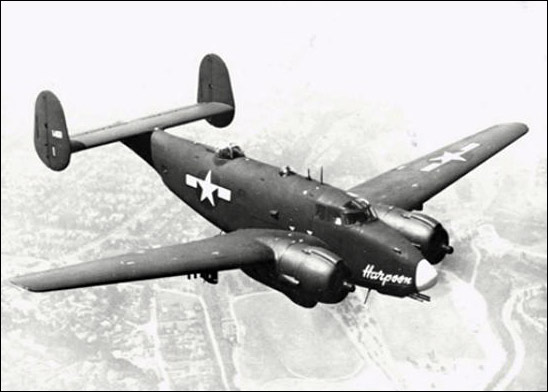 |

PV-2 Harpoon | Historical Archives | Underwater images/video | Exploration updates
PV-2 Harpoon:
The Lockheed PV-2 Harpoon was a major redesign of the PV-1 Ventura to optimize it for the maritime reconnaissance role. The redesign turned out to be so major that it was assigned a new basic model number of Vega Model 15.
The Harpoon shared the same power plant and twin tailed configuration of the Ventura but had longer constant-taper wings, a rectangular tail-plane, larger vertical stabilizers and rudder, increased fuel capacity, increased armament, and a larger bomb bay to completely enclose a torpedo. The new improvements did not make the Harpoons any more popular with their crews.
Some Harpoons saw action during the last year of the (WWII) Pacific campaigns, but most Harpoons were used by US Navy Reserve units after the end of the war. At one time, Harpoons equipped eleven VP squadrons of the Naval Reserve. The Harpoon was finally phased out of service in August 1948. Several Harpoons ended up on the commercial market after being declared surplus to Navy requirements. Some were modified as private transports with deluxe interiors and a few were modified as agricultural spray planes.

Robert Mester has stated that he believes this aircraft is a rare PV2-D "strafer" model of which only 35 were built. The "D" model differed from the standard Harpoon by having a reconfigured nose which held eight fixed forward-firing .50 caliber machine guns instead of the usual five. Because the nose of this aircraft is buried in the mud, the aircraft’s "unique tail configuration and the location of the belly windows" led Mester to this conclusion. On the basis of the rarity of the "D" model, Washington’s Office of Historic Preservation has deemed the aircraft eligible for listing on the National Register of Historic Places and the State Register of Historic places.
Click here to see the accident report dated September 4, 1947.
The aircraft is the property of the US Navy, which prohibits the removal of artifacts from the site.
